 REUBEN BOLIEU
.
August 02, 2024
.
New Products
REUBEN BOLIEU
.
August 02, 2024
.
New Products
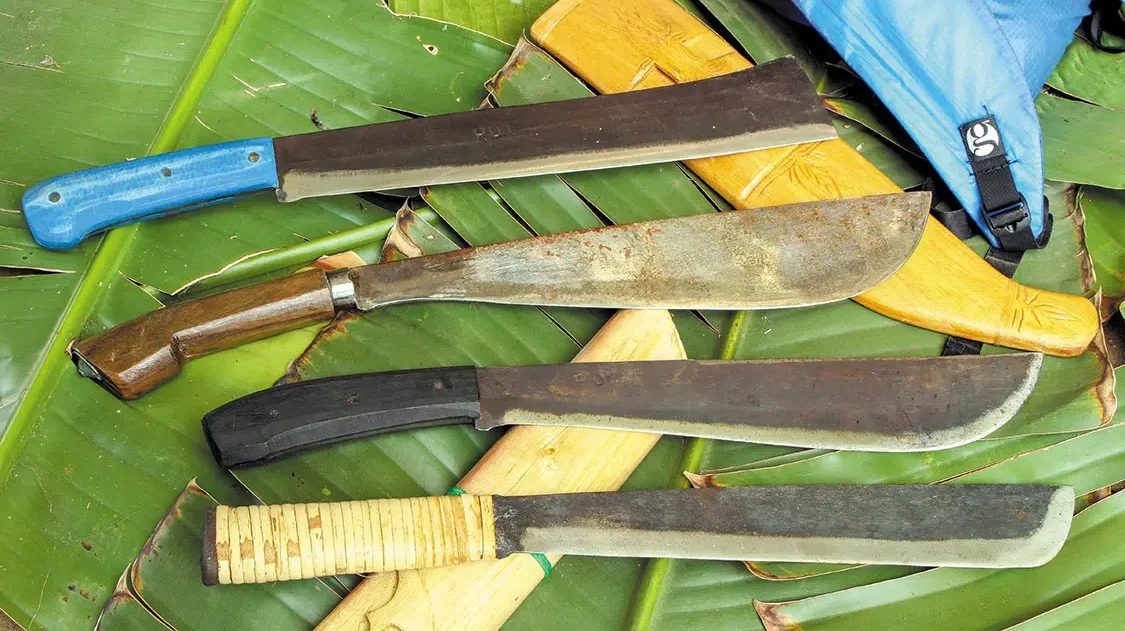
Several years ago, I got this bug in me to start hiking volcanoes around the world, but not the typical volcanoes found in Costa Rica or Hawaii that attract all the tourists.
I was looking for some more obscure and exotic locations, the kind that didn’t have a gift shop or cheap T-shirts for sale. I got my chance to do some travel photography in the Mediterranean, where I would be able to visit Santorini, Greece, and Mount Vesuvius in Italy. I heard about another volcano on the other side of the globe. It was called Taal volcano in Tagaytay, Philippines. A few thousand miles and 30 mosquito bites later, I found myself staring into the sulfur crater of this mighty little volcano.


On this trip, I was first exposed to Filipino-style bolos. A bolo is the Filipino equivalent of the Latin American machete, except very different. Most production machetes in South America are mass-produced by stamping them out of huge sheets of soft carbon steel in a factory setting. Large chopping tools made in Southeast Asia are usually handmade using traditional forging techniques.
Often these knives are made to be a little thinner than the typical machete and have much thicker stock. A bolo has a medium-long blade with a narrow hilt leading to a pronounced curve, broader towards the belly with a sharp point, although sometimes blunt at the tip.
“A forged blade has a specific look that captures a feeling of raw tradition often absent from modern blades using stock removal methods.”
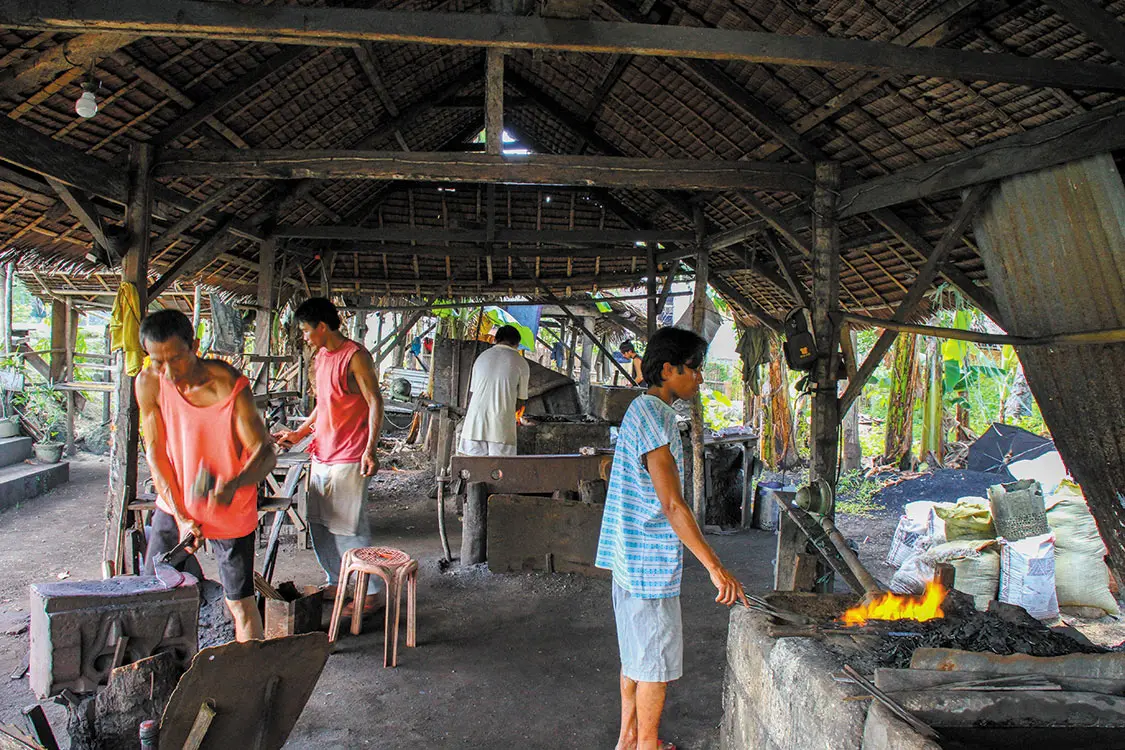

People in the neighboring country of Palau call Filipinos “People of the Knife” due to their knife culture, both using and making knives, such as bolos (also called Itak and Sundang), balisongs (butterfly knives), karambits, and many martial arts fighting swords. While I was in the Philippines, I made it my personal goal to find as many forges as possible to see exactly how the blades are made and, of course, to buy some for my jungle adventures. Little did I know that would become the start of many trips back to the Philippines to research and learn how their cutlery has influenced the modern cutlery industry around the world.
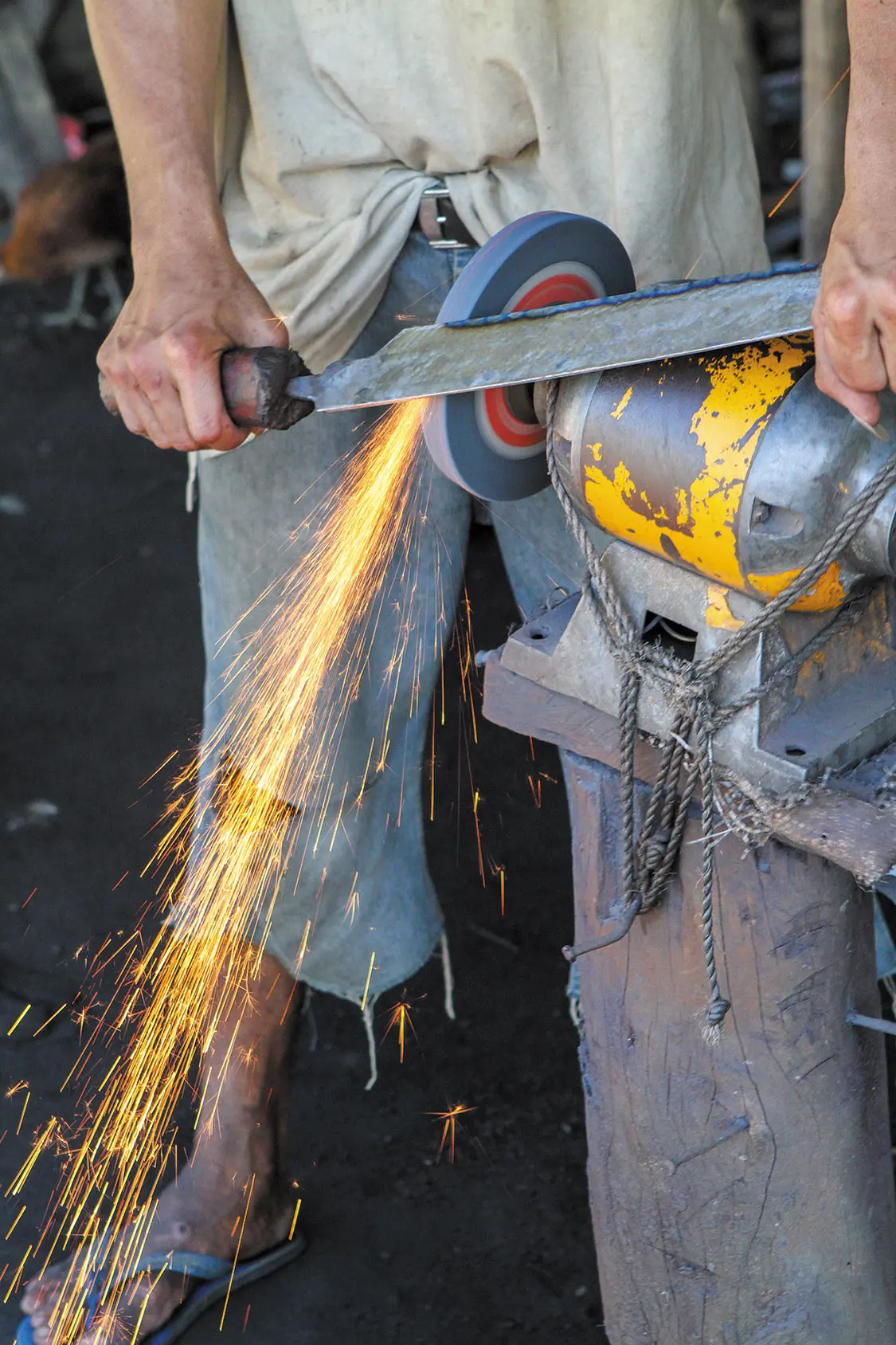

A forge is a workplace where blacksmiths forge blades. Forging is one of the oldest known metalworking processes where metal is heated in a fire and pounded into shape with a hammer and anvil. My first real exposure to the forging process was when I journeyed to Bohol, Philippines. There was a forge that I read about a few months before my trip, so when I landed, I had my agenda.
Arriving at the forge and witnessing their primitive yet innovative equipment felt like I was slowly going back in time. They had all the necessities: anvil, tongs, hammers, slack tub, and a forge (hearth or fireplace), just with a developing nation’s creative twist. For example, their anvils were made of metal beams cut down to size and stuck into coconut tree stumps. Engine blocks mounted on top of tree stumps also seemed to be typical anvils at this particular forge.


Designed for burning coal, the actual forge is made of brick and used by the blacksmith to heat a piece of metal to a temperature where it becomes easier to shape. For a bellows, they used a very old-looking leaf blower modified to blow air into the core of the forge, supplying constant air to the fire/coal. To cool off the steel (quench), they used bamboo filled with water or oil to pour over the blade.
The chisels used to cut the hot metal were fastened to a piece of split bamboo. Large metal tongs were used to transfer the steel from the forge to the anvil and the slack tub for quenching. Besides the tongs, a hammer seemed to be the only piece of gear that was not improvised. The bolos in this region of the Philippines feature stick tangs, onto which pieces of wood are pushed for the handles.
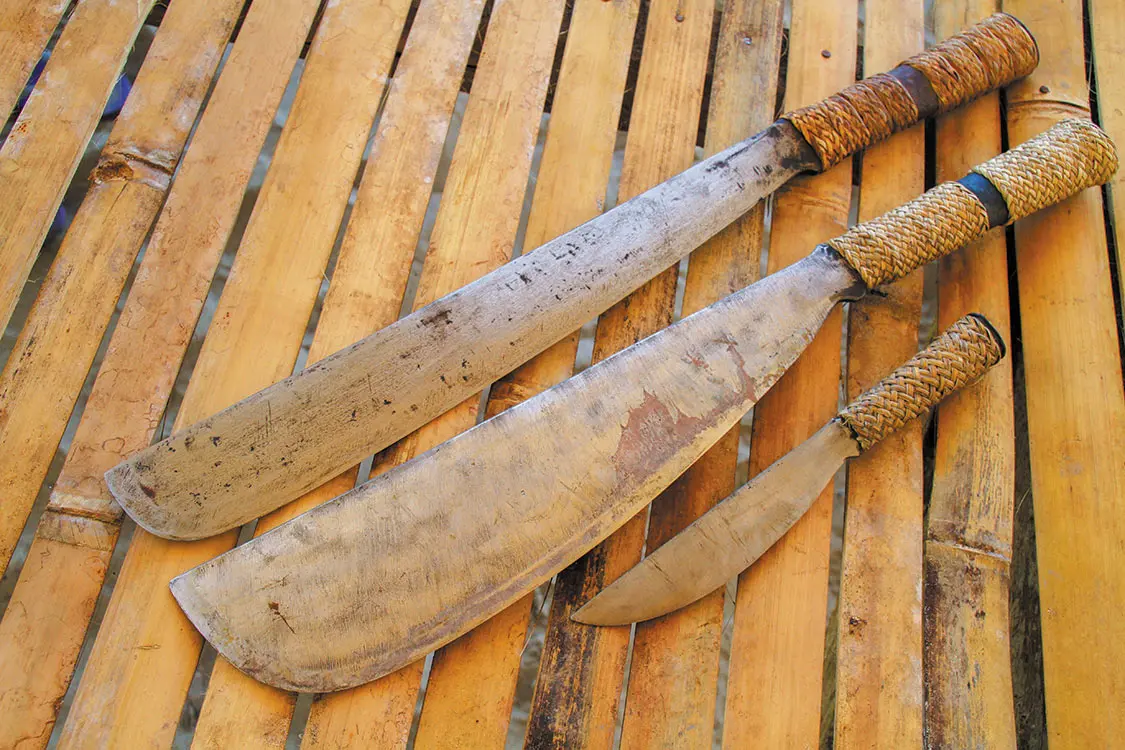
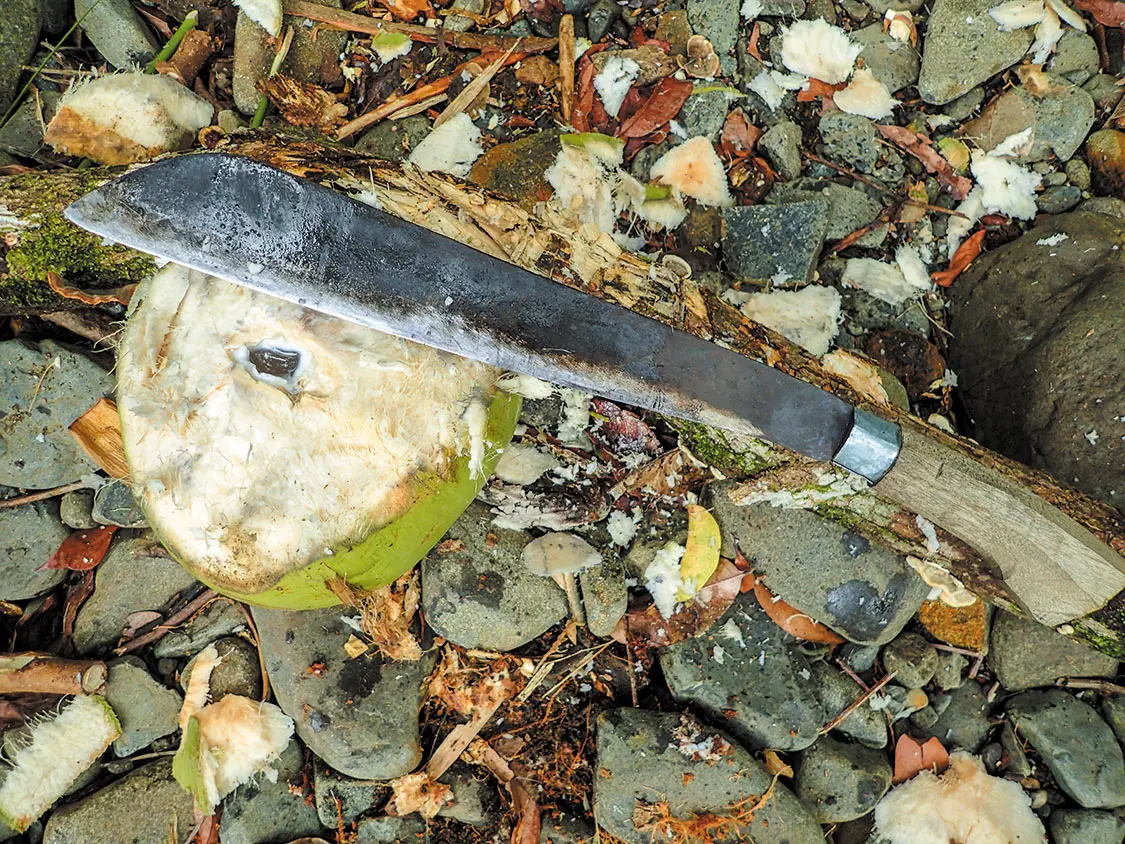
To secure a handle, a plastic grocery-type bag is stuffed into the hole. When the heated steel is shoved into it, the melted plastic acts like glue, fixing the blade steel to the wooden handle. This technique is done in Thailand and Malaysia for their large blades as well. The final grinding at this particular forge was done with an electric bench grinder. As rough as the shop looks, the blades produced are very functional work tools.
The steel used for most bolos and knives comes from vehicle leaf springs. That type of steel is meant for a lot of impact and flex. The grade of steel is in the neighborhood of 5160 spring steel, which gives the shop a little bit of an automobile scrap yard look to it. Wooden scabbards (sheaths) are typical for carrying a bolo around.
Usually, two pieces of wood are hollowed out in the shape of the blade and joined together, forming a covering; it’s a simple and effective solution for a region where there is zero Kydex and leather is not readily available. At all costs, leather in a tropical environment should be avoided when using carbon and spring steel due to corrosion concerns.

I traveled north while on Luzon, the main larger island, to see the 2,000-year-old rice terraces in Banaue, where I heard about the bolo maker who specialized in the Mountain Province bolos. These bolos are unique in that the entire tool is one piece, with the handle folded over and left hollow. It is referred to as a socket (tube-style) handle and is usually wrapped in rattan that is woven like a basket over the bare steel handle.
The long chopping blades are generally slightly rounded at the point and void of a sharp, penetrating tip. However, the smaller fixed blades are sharp at the tip. It’s just their style up there in the Mountain Province—and who am I to question what has been working just fine for them decades before I got there?

As far as sharpening goes, these blades are finished with stones by hand. This is a complete 360 from how they finish the bolos down south in the Visayan region of Bohol. These Mountain Province bolos are done so cleanly it would take a keen eye to tell that they weren’t done on modern sanding belts. These also have a convex edge, which is the best edge for choppers, in my humble opinion.
The sheaths for these particular bolos are made from Narra wood, a hardwood of the Philippines. It is dark in color and just about the strongest wood available in the Mountain Province. So, as one can see, being a blade forger also means being a capable wood carver.
“The Filipino bolo is shorter than most Latin bolo machetes, averaging 12 to 16 inches long and usually about 3/16-inch thick…”

As rough as they all appear, they come with a distal taper and convex edge. These are two features usually only offered in the United States through a custom knifemaker. Distal taper is when the blade thickness gradually tapers towards the tip, meaning it is thickest near the handle and middle of the blade and thinner towards the tip. The convex edge applies to the sharp cutting edge and is shaped like a bullet. It gradually gets thinner towards the cutting edge with no bevel but one continuous edge. In places like the Philippines and Malaysia, they know all about cutting efficiency and don’t think of it as anything extra like major knife companies do.

Finally, as I eagerly awaited to see the perfect cone-shaped volcano, the Mayon volcano in Legazpi, Philippines, I saw yet more bolos. The large choppers from Legazpi were made in a very well-known town called Tobaco. Tobaco is known for its sharp, tough cutting tools, mainly scissors. Bolos, cleavers, and scissors are all made from ball-bearing steel in Tobaco.
Bolos from Tobaco are hand-forged, have rat-tail tangs going into the handle all the way through, and are peened at the end for extra strength over a standard push tang attached with plastic bags as the adhesive. These bolos from Tobaco cost more due to the more robust steel and the handles, which are also made of Narra wood. The finish and sheath are also a little better on some of these, which is why people are willing to pay extra for bolos from Tobaco, Philippines.

A forged blade has a specific look that captures a feeling of raw tradition often absent from modern blades using stock removal methods. One is not any better than the other, just different. Axes, chopping blades, cleavers, and small hunting/woods knives can all be had in both styles, but there is just something about the hammer marks of a knife made with such simple tools as a hammer, anvil, tongs, water, and fire. This is a tradition that is alive and well, being preserved in Southeast Asia. The next time you find yourself in this part of the world, step off the tourist path and support the local blacksmiths and their knifemaking art.
The bolo knife originated in the Philippines. However, the characteristics of Filipino bolo knives have not completely carried over to the rest of the industry. Cold Steel, Condor, Gerber, Imacasa, Marbles, Martindale, and Tramontina all offer a bolo machete that features a straight blade and handle, with a hump on the top towards the tip. This style has become the standard idea for a bolo. I will say that the hump on the top does supply a weight-forward feel; however, they are all thin Latin bolo machetes.
The Filipino bolo is shorter than most Latin bolo machetes, averaging 12 to 16 inches long and usually about 3/16-inch thick, tapering to 3/32-inch at the tip. That continuous curve, which is narrow at the hilt and widens towards the tip, is the Filipino bolo’s most recognizable trait. The undeniable result of a well-placed chop from a weight-forward tool like a bolo or kukri knife will make a believer out of even the most skeptical blade wielder.
Editor’s Note: A version of this article appeared in TREAD May/June 2024.
We use cookies to enhance your browsing experience, serve personalized ads or content, and analyze our traffic. By clicking "Accept All", you consent to our use of cookies. Visit our Cookie Policy for more info.
Notifications
Share Link